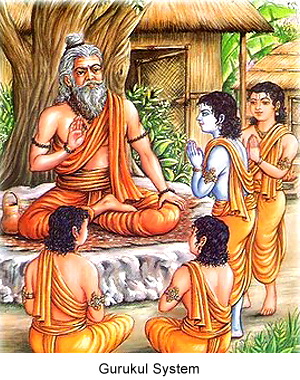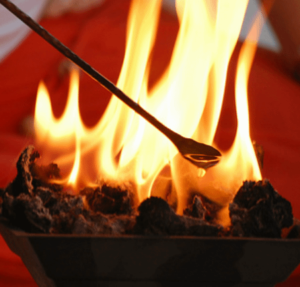Tangents of Charaka’s Arc-02
Knowledge learns knowledge, and knowledge is in need to understand knowledge. Forms of knowledge are many but basically 5 with respect to five fundamental elements viz. Akasha, Vayu, Agni, Jala and Pruthvi. As the knowledge is fivefold the learning methods also go as five fold. I have question reengaging in my mind for long time. What happens to the part of sound or electrical waves spread all the way, as we heard a part of it we hear or get it our mobile. The rest of the knowledge in the air revolves till it gets a medium to receive it. Hope you accept it.
Some, who are capable of getting a proper medium may receive the knowledge in dimensions and reproduce the same knowledge to common not only vertical but also in horizontal models to spread.
Charaka Samhita brings us the talent methods of teaching with easy methods of describing the complicated subject. All the way the ancient teaching and learning methods follow the athematical models in applied aspect. Knowledge adaptation methods before to Charaka are four fold. The headings followed to obtain the knowledge and safe guard the health are –
- Tapa (Concentration),
- Upavasa (Regulation),
- Adhyayana (Study) and
- Brahmacharya (regimen experimentation)
The intentions of teaching and learning are made clear as “Padairalpam matim budhwa” i.e. small and simple words of great meaning and explanation are intended but not the pages of explanation for nothing. The teaching methods follow the vertical and horizontal methods of rationalization to explain the essence. It appears that these are refined statistical methods of combination and permutations to clarify the content in different methods based on the levels of students. Olden schools followed specific Teacher qualification (not the donation qualification) along with qualities and teaching abilities. At the same time the selection criteria for a student in a specific branch also has the norms. These qualities of a teacher and student are dealt in detail by Charaka in Vimana section. The teaching and learning in between teacher and disciple has peculiar angle. These angles are studied in dimensional methods instead of models of vertical or horizontal.
The first instance of the knowledge transfer is said as “Brahma Smrutwa”, which means the Brahma recollected. The knowledge known is recollected but not the unknown. How come it is possible? Yes! It is possible in two ways – the former is the knowledge learns knowledge in single dimension. The later explanation is from present day science states that the genes are imprints of the past and recollects the entire saga of the human. Only what is to be done is decoding from the genetic junk.
The second dimension lies with two, i.e. learners and Teacher. There after the object comes in third dimension of knowledge. Fourth dimension is always the time. The time bound to role always and understanding the time replay (which is not possible) is possible in fourth dimension. Very few may be able to demonstrate this in a plank second. The recollection becomes personalized so it may not be a dimension of knowledge. If we consider with in frame – it can be a personalized first dimension.
The models of learning are either vertical or horizontal. Surface knowledge or wide application in different faculties is learned in horizontal knowledge. On the other hand, the knowledge of an individual topic or object perceived with vertical knowledge.
To understand how an Herb acts in different disease is vertical and the use of herb in different areas like as food, as fuel, as medicine, or in spiritual, etc. goes as horizontal knowledge.
The disciple qualities are enumerated in Charaka as –
- Su-srusha (Exercising),
- Su-Shravana [Susruta] (hearing),
- Su-Grahana (reception),
- Dharana (understanding),
- Ooha Abhinivesha (conformation of knowledge by combination & permutation method), and
- Poha Abhinivesha (identifying the application methods). [Ch.Su.1/23 Chakrapani]
A person who teaches or instructs, especially as a profession called as instructor in terms of teacher. According to the present day a teacher who follows a text book should be a comprehensive text designed to focus on skills that employers (knowledge managers) demand in today’s workplace; i.e. thinking, listening, composing, revising, and editing. Students are encouraged to acquire many workplace skills through integrated and applied instruction so that mastering technical writing is relevant and exciting. Abundant model documents and study methods of present reflect Office formats rather than thought provocations and comprise persuade questions for providing critical thinking opportunities. Charaka append few more qualities to student talents. To develop the knowledge aptitudes, Charaka enforce Adhyayana (learning), Adhyapana (teaching) and Tadwidya Sambhasha (research discussion). To obtain these three sets of attitudes the following are required [Charaka Vimana 8/6].
- Adhigamya Shastram (learning capability of entire information)
- Shastra Dhrithata (experiencing the knowledge)
- Abhidhana sausthavama (capabilities to explain the learned to others)
- Vignane vachana (orientation of acquiring extended knowledge of research)
- Vachana shakti bhooyo bhooya prayateta (publication capacities of abridging and elaborating)
The knowledge is not parted to know as must know, desired to know and nice to know. The Ayurveda knowledge is an assortment of physics, metaphysics, chemistry, botany, zoology, medical, social and many. A multi-dimensional applied knowledge should not have any barriers or controls. The purpose is as to serve the ailed community and to make them agony free, any information regarding and directing is applied. For developing attitude, aptitude and orientation towards is a mode of dedication to the service but not for earning.
The same outlook was shown in selection of teacher by student also. The enumerated qualities even though dissimilar form the present day schedule and modality, still far ahead to its norms and conditions of present.




Average Rating